 July 12, 2018 John E. Ross, KD8IDJ, Editor
| ||||||
FCC Administrative Law Judge Dismisses Radio Amateur's Long-Standing License Renewal Application A California man embroiled in a long-running license renewal proceeding has lost the next step in his fight to remain a radio amateur. In a July 9 Order, FCC Administrative Law Judge Richard L. Sippel terminated the decade-old license renewal application of William Crowell, W6WBJ (ex-N6AYJ), of Diamond Springs, California, upon a motion by Enforcement Bureau Chief Rosemary C. Harold. Sippel's Order followed Crowell's refusal to appear in Washington, DC, for a hearing to consider not just his license renewal but related enforcement issues dating back 15 years or more.
"Crowell's decision not to appear at the hearing has the same practical effect as if he had initially failed, pursuant to Section 1.221(c) of the Rules, to file a written notice of appearance or otherwise signal his intent to participate in the hearing on his pending renewal application, i.e., he has waived his right to prosecute that application," Harold said in the Enforcement Bureau's June 12 motion to dismiss Crowell's license renewal application. In his Order, Sippel said he agreed with Harold's determination. Crowell had asserted that the FCC was obliged to hold field hearings in the city nearest to a licensee's residence, but Sippel said that was incorrect. Crowell invoked financial hardship rules, but Sippel said those would not apply in an Amateur Radio case. Dismissal of the renewal application was "with prejudice." It has been 10 years since the FCC set Crowell's license renewal application for hearing, which was to center on whether he had violated FCC Part 97 rules in the early 2000s, in part by causing intentional interference, transmitting music, and "using indecent language," and whether he was qualified to have his renewal application granted. Crowell raised the lengthy delay in his response to Harold's June 12 motion. "The more-than-10-year delay in holding a hearing herein (that's only since the Hearing Designation Order [was] issued; the pre-HDO part of the case goes back to 2000) violates my administrative due process rights," claimed Crowell, who is an attorney. Crowell further claimed that most of the witnesses who might testify at a hearing are now deceased, and "the evidence is terribly stale." He said the Enforcement Bureau "has no excuse for not having taken this case to a hearing at a much earlier date, and, at this point, my ability to elucidate the truth has been fatally compromised." Crowell was fined $25,000 in 2016 for intentionally interfering with the transmissions of other radio amateurs and transmitting prohibited communications, including music. The FCC said Crowell did not deny making the transmissions but argued, in large part, that those transmissions were protected by the First Amendment of the Constitution. The FCC turned away that assertion. Sippel said he had stayed the renewal case on the basis of the pending Forfeiture Order proceeding, but said he was later informed that the US Department of Justice had decided not to prosecute the case. Radio Amateur to Pay $7,000, Face Restricted Privileges to Settle FCC Interference Case The US Department of Justice and the FCC have reached a settlement with Brian Crow, K3VR, of North Huntingdon, Pennsylvania, to resolve allegations that Crow intentionally interfered with the communications of other Amateur Radio operators and failed to properly identify. The core component of the settlement calls on Crow to pay $7,000 to the US Treasury, the FCC and US Attorney for the Western District of Pennsylvania Scott W. Brady announced in separate July 3 news releases. In addition, Crow's Amateur Extra class license will be restricted to Technician-class privileges for 6 months, and he has agreed to discontinue contact with the individuals involved in this case. Crow's Amateur Extra privileges will be restored after 6 months, "if no new violations have been found," the FCC said.
The settlement resolves a civil complaint (USA v. Brian Crow [No. 17-595]) in Federal District Court for the Western District of Pennsylvania to recover an unpaid $11,500 fine that the FCC imposed on Crow in a 2015 Forfeiture Order. The FCC recounted in its Forfeiture Order that it had responded in March 2014 to "several complaints of intentional interference" on 14.313 MHz, and that Commission agents used radio direction-finding techniques to determine the transmission sources. According to the court complaint against Crow, FCC agents tracked transmissions to Crow's residence and monitored them for approximately 3 hours and heard him transmit slow-scan television (SSTV) signals and a prerecorded voice transmission of another Amateur Radio station on the frequency. The FCC said it worked with Brady's office to craft the agreement with Crow arising from its Forfeiture Order "that found his behavior violated the Communications Act and the Commission's rules." Read more. World Radiosport Team Championship 2018 Formally Opens in Germany Be ready to listen for call signs in the Y2A - Y9A series this weekend. Following 4 years of preparation, World Radiosport Team Championship 2018 (WRTC 2018) formally opened on July 12. Now attention turns to see how the 63 competing teams fare in the 24-hour event, July 14 - 15 in and around Wittenberg, Germany. Observers will be able to follow their progress via social media or the WRTC 2018 Live Scoreboard. Fourteen North American teams are on the roster, A competition within a contest, WRTC 2018 takes place in conjunction with the International Amateur Radio Union (IARU) HF Championship, although with different or additional rules. Both events get under way on Saturday at 1200 UTC and conclude on Sunday at 1159 UTC, and all radio amateurs may take part in the IARU event. The ARRL Headquarters station will be W1AW/4 in Georgia. The IARU HQ station will identify as NU1AW/9 from Illinois. These and other HQ stations count as multipliers in calculating IARU contest scores. WRTC 2018 organizers have set up a program of awards and activities intended to "create big pileups for the WRTC stations" from those who will be on the IARU HF Championship side of the competition. Awards for outside participants include:
Even if you are not sure that the WRTC 2018 team copied your call sign correctly, organizers say to send in your log anyway, and they will follow up. WRTC Sprint
WRTC Most QSOs (MQ)
Assistant Judge Special prizes will be offered to all operators sending in their logs by 1800 UTC on Sunday, July 15. WRTC 2018 Distance Challenge
Propagation conditions could be a big factor, and to that end, Jari Perkiömäki, OH6BG/OG6G, has prepared what he calls "a propagation starter kit" for WRTC 2018.
German telecommunications regulator Bundesnetzagentur (BNetzA) announced today that WRTC 2018 teams will use the call signs Y81A through Y89U on a one-time basis. Y## call sign prefixes were inherited from the former East Germany regulatory regime and have not been used for nearly 30 years -- since the reunification of East and West Germany. Specific call signs will be assigned by lottery. Video updates and reports are available on the WRTC 2018 website. Results will be announced and medals awarded in a closing ceremony on Sunday. The Doctor Will See You Now! "Mailbag" is the topic of the current (July 5) episode of the "ARRL The Doctor is In" podcast. Listen...and learn!
Every 2 weeks, your host, QST Editor-in-Chief Steve Ford, WB8IMY, and the Doctor himself, Joel Hallas, W1ZR, will discuss a broad range of technical topics. You can also e-mail your questions to doctor@arrl.org, and the Doctor may answer them in a future podcast. Enjoy "ARRL The Doctor is In" on Apple iTunes, or by using your iPhone or iPad podcast app (just search for "ARRL The Doctor is In"). You can also listen online at Blubrry, or at Stitcher (free registration required, or browse the site as a guest) and through the free Stitcher app for iOS, Kindle, or Android devices. If you've never listened to a podcast before, download our beginner's guide. ARRL Urges Regulatory Regime to Keep Non-Amateur Satellites off Amateur Spectrum ARRL wants the FCC to facilitate bona fide Amateur Satellite experimentation by educational institutions under Part 97 Amateur Service rules, while precluding the exploitation of amateur spectrum by commercial, small-satellite users authorized under Part 5 Experimental rules. In comments filed on July 9 in an FCC proceeding to streamline licensing procedures for small satellites, ARRL suggested that the FCC adopt a "bright line test" to define and distinguish satellites that should be permitted to operate under Amateur Satellite rules, as opposed to non-amateur satellites that could be authorized under Part 5 Experimental rules.
ARRL said it views as "incorrect and overly strict" the standard the FCC has applied since 2013 to define what constitutes an Amateur Satellite, forcing academic projects that once would have been operated in the Amateur Satellite Service to apply for a Part 5 Experimental authorization instead. This approach was based, ARRL said, on "the false rationale" that a satellite launched by an educational institution must be "non-amateur" because instructors were being compensated and would thus have a "pecuniary interest" in the satellite project. ARRL said well-established Commission jurisprudence contradicts this view. ARRL told the FCC that justification exists to expand the category of satellite experiments conducted under an Amateur Radio license, "especially those in which a college, university, or secondary school teacher is a sponsor." But, ARRL continued, a compelling need exists to discourage Part 5 Experimental authorizations for satellites intended to operate in amateur allocations by non-amateur sponsors, "absent compelling showings of need." "There is no doubt but that Amateur Radio should be protected against exploitation by commercial entities, and there should be a compelling justification for a Part 5 Experimental license issued for a satellite experiment to be conducted in amateur spectrum," ARRL said. ARRL noted that International Amateur Radio Union (IARU) policy regarding satellites operated in Amateur Radio spectrum is only to coordinate satellites where licensees and control operators are radio amateurs, as well as having a "mission and operation" consistent with the International Telecommunication Union (ITU) Radio Regulations' definitions of the Amateur and Amateur Satellite services. ARRL asserted that incorporating Amateur Radio in experiential learning using small satellites -- e.g., CubeSats -- is good for Amateur Radio, for students, and for the advancement of technology, and it urged the FCC to adopt a regulatory paradigm that encourages this approach. AMSAT-NA also filed comments in the proceeding. The AMSAT remarks reflect several of the same concerns expressed by ARRL. Interested parties may file reply comments in the proceeding, IB Docket No. 18-86, by August 7, 2018. Read more. Baker Island KH1/KH7Z DXpedition in the Record Books All Baker Island KH1/KH7Z DXpedition operating positions went silent at 1200 UTC on July 5, and all logs are believed to have been uploaded to Club Log. The final contact was on FT8 with JA2FJP on 80 meters. The 14-member team, accompanied by a US Fish and Wildlife Service escort left the island on July 6 for the 6-day voyage across the International Date Line to Fiji.
The 9-day stay on Baker yielded 64,434 contacts, including more than 1,200 on 160 meters under midsummer conditions. Greenbaum said the DXpedition's use of FT8 allowed many hams with modest stations to put KH1/KH7Z in the log. The team began tearing down the stations and equipment on July 4. KH1/KH7Z completed 15,289 contacts (28% of the total) on FT8 DXpedition Mode. Nearly 41% of all contacts were made on 20 meters, the "bread-and-butter band." The team focused on giving out as many all-time new one (ATNO) contacts as possible. Full band-by-band, mode-by-mode statistics are on Club Log, where several stations posted their observations. Bob Chortek, AA6VB, in California, commented, "Thank you all for hard work and sacrifice (time, money, time away from loved ones, having to endure 100+ degree heat, etc.) to make this DXpedition a reality. Great job!" Timothy Marek, K7XC, in Nevada, remarked, "What better way to finish off nine-band DXCC than to work Baker island on 160 for [the] last one! Thank you very much." Bob Marsh, K2RU, in Virginia, said, "Many thanks for an ATNO. Propagation looked bleak for the first couple days, but then SSB and CW within 55 minutes of each other! Nicely run operation." The KH1/KH7Z DXpedition team was headed to Fiji on the first leg of its trip home. The Dateline DX Association (DDXA) sponsored the Baker Island DXpedition. CASSIOPE Spacecraft Listens In on 2018 ARRL Field Day The Canadian CASSIOPE (CAScade, SmallSat, and Ionospheric Polar Explorer) spacecraft once again eavesdropped on ARRL Field Day activity. CASSIOPE's Radio Receiver Instrument (RRI) was tuned to 7.005 MHz during six passes over the North American continent during Field Day 2018, although there was no advanced publicity this year. The RRI is a component of the spacecraft's Enhanced Polar Outflow Probe (e-POP), a suite of eight science instruments that study space weather.
CASSIOPE also had turned a close ear to activity during Field Day 2015 and 2017, and its activities last year were heavily promoted. "It's been tough to sort out the 2017 data, so we decided to use a different tactic this year," Perry said. He and members of the Ham Radio Science Citizen Investigation (HamSCI) group coordinated with the Nashoba Valley Amateur Radio Club (N1NC) and with the Indianapolis Radio Club (W9JP) -- which operated Field Day as N9NS with the Hoosier DX and Contest Club (N9NS) and a coalition of other Central Indiana radio clubs -- to "direct traffic," asking their members to stick to pre-selected frequencies during the passes, and to record their transmitting logs.
Perry and the HamSCI group have been using ARRL Field Day as an opportunity to study space weather and HF radio wave propagation. He's hoping that CASSIOPE will continue to participate in Field Day. "We're looking forward to next year already!" he said. Perry is the lead author of the first publication to use data from the ARRL Field Day experiments, Citizen radio science: an analysis of Amateur Radio transmissions with e-POP RRI. The paper, which reports on CASSIOPE's involvement in ARRL Field Day 2015, is set for publication in Radio Science. Read more. World JOTA-JOTI Registration Now Open Registration is open worldwide for Scouting's Jamboree on the Air (JOTA) and Jamboree on the Internet. JOTA-JOTI take place October 19 - 21 -- always the third weekend of October. JOTA Coordinator Jim Wilson, K5ND, encourages JOTA groups to register as soon as possible.
"JOTA began in 1957 following the World Jamboree that year, when the ham radio operators gathered over coffee and thought about doing the on-the-air part of Jamboree every year," Wilson recounted. This year will mark the 61st JOTA (and the 22nd year of JOTI). "Many JOTA Amateur Radio stations are also starting to use JOTI channels, like ScoutLink, to more readily connect with Scouts around the world," Wilson told ARRL. "Other channels include Skype, YouTube, and social media." Wilson said once groups have registered, other locations around the world will know to look for them. "Likewise, you'll be able to see at a glance all the rest of the locations from across town to the other side of the Earth," he added. In Brief
Getting It Right! The article "ARRL Field Day 2018 Participants Have Fun Despite Dicey HF Conditions" in the June 28 edition of The ARRL Letter contained incorrect information in a photo caption, which should have read "Kevin Smith, KK6VF, of the West Valley Amateur Radio Association, demonstrates the K6EI GOTA station to a young ARRL Field Day visitor. [Bill Frantz, AE6JV, photo]" The K7RA Solar Update Tad Cook, K7RA, Seattle, reports: No sunspots have been visible for 15 days (as of July 11). According to Spaceweather.com, to find an equally long stretch of no sunspots, we have to look back about 10 years, when we were emerging from the deepest solar minimum in a century and the sun was blank for 52 consecutive days. Spaceweather.com did report "a relatively small spot" on August 11-12, 2008, however, and it may have been so small that NOAA didn't record it.
Predicted solar flux is 73 on July 12-19; 76, 74, 72, 72, and 70 on July 20-24; 68 on July 25 - August 2; 70 on August 3; 72 on August 4-6; 74 on August 7; 76 on August 8-16; 74, 72, 72, and 70 on August 17-20, and 68 on August 21-25. Predicted planetary A index is 5 on July 12-19; 15, 8, 10, 18, and 8 on July 20-24; 5 on July 25 - August 4; 12 and 8 on August 6-7; 5 on August 8-10; 16 and 8 on August 11-12; 5 on August 13-15; 15, 8, 10, 18, and 8 on August 16-20, and 5 on August 21-25. Sunspot numbers for July 5 through 11, 2018 were 0, 0, 0, 0, 0, 0, and 0, with a mean of 0. The 10.7-centimeter flux was 68.1, 70.5, 72, 71.6, 72.9, 72.1, and 73.3, with a mean of 71.5. Estimated planetary A indices were 17, 7, 5, 4, 3, 7, and 8, with a mean of 7.3. Estimated mid-latitude A indices were 11, 8, 6, 6, 5, 11, and 8, with a mean of 7.9. Send me your reports or propagation observations. Just Ahead in Radiosport
See the ARRL Contest Calendar for more information. For in-depth reporting on Amateur Radio contesting, subscribe to The ARRL Contest Update via your ARRL member profile email preferences. Upcoming ARRL Section, State, and Division Conventions
Find conventions and hamfests in your area.
. .
Subscribe to...
Free of charge to ARRL members...
| ||||||
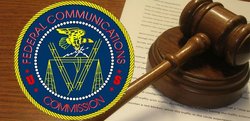
.jpg) "Amateur Radio licensees know that the rules require them to share the airwaves, which means that bad actors cannot plead ignorance," FCC Enforcement Bureau Chief Rosemary Harold said in an
"Amateur Radio licensees know that the rules require them to share the airwaves, which means that bad actors cannot plead ignorance," FCC Enforcement Bureau Chief Rosemary Harold said in an 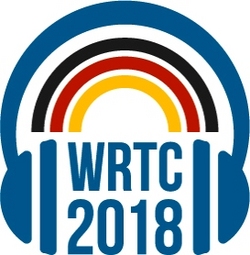 including
including 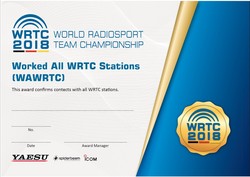 Worked All WRTC Stations (WAWRTC)
Worked All WRTC Stations (WAWRTC)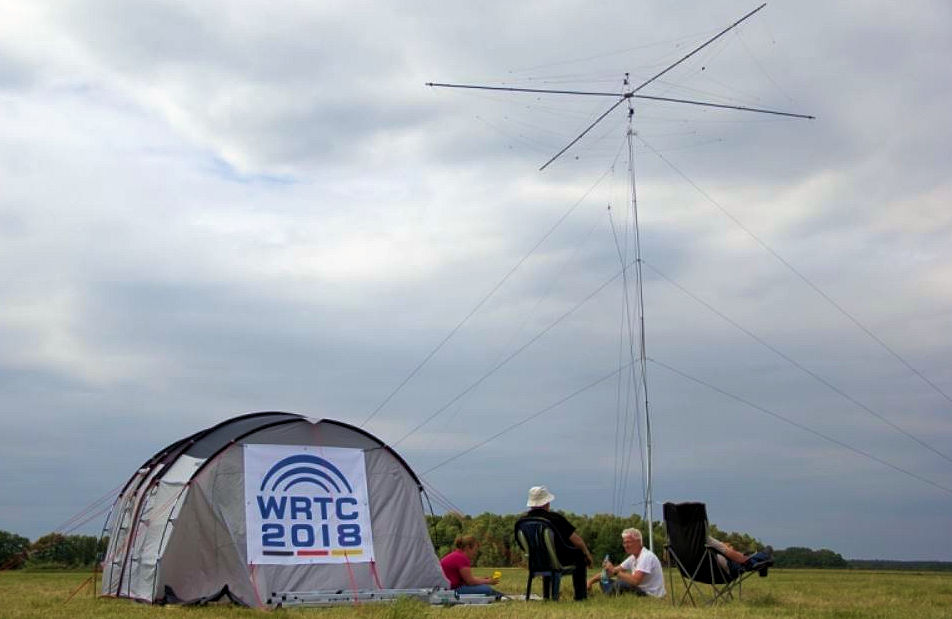 "It will give you valuable insights into making propagation predictions in general, and a set of pre-calculated, point-to-point, band-by-band prediction tables, together with an extensive set of coverage area maps," he said. All predictions are for short-path propagation.
"It will give you valuable insights into making propagation predictions in general, and a set of pre-calculated, point-to-point, band-by-band prediction tables, together with an extensive set of coverage area maps," he said. All predictions are for short-path propagation. Sponsored by
Sponsored by  "Specifically, it is possible to clarify which types of satellite operations are properly considered amateur experiments conducted pursuant to a Part 97 Amateur Radio license, and [those] which should be considered experimental, non-amateur facilities, properly authorized by a Part 5 authorization."
"Specifically, it is possible to clarify which types of satellite operations are properly considered amateur experiments conducted pursuant to a Part 97 Amateur Radio license, and [those] which should be considered experimental, non-amateur facilities, properly authorized by a Part 5 authorization." "The team is very tired but proud of QSO totals, over 17,300 unique calls [28%] in the log, and the successful deployment of the new DXpedition version of FT8 that showed over 6,000 unique calls in our log," reported team member Don Greenbaum, N1DG. He said the team celebrated Independence Day with hot dogs and burgers.
"The team is very tired but proud of QSO totals, over 17,300 unique calls [28%] in the log, and the successful deployment of the new DXpedition version of FT8 that showed over 6,000 unique calls in our log," reported team member Don Greenbaum, N1DG. He said the team celebrated Independence Day with hot dogs and burgers.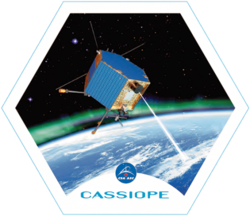 "We're really happy with our results this year," remarked Gareth Perry, a physics and astronomy postdoctoral research associate at the University of Calgary in Canada, CASSIOPE's home institution. "RRI recorded plenty of chatter between Field Day participants, especially during our passes over the eastern and central United States on the evening of [June 23]."
"We're really happy with our results this year," remarked Gareth Perry, a physics and astronomy postdoctoral research associate at the University of Calgary in Canada, CASSIOPE's home institution. "RRI recorded plenty of chatter between Field Day participants, especially during our passes over the eastern and central United States on the evening of [June 23]."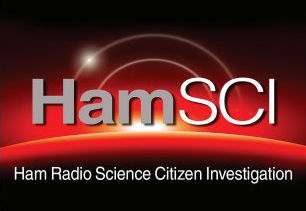 "We figured that it would be easier to assign frequencies ahead of time, so that we [would] know where to look in post-processing, which seems to have paid off," Perry added.
"We figured that it would be easier to assign frequencies ahead of time, so that we [would] know where to look in post-processing, which seems to have paid off," Perry added.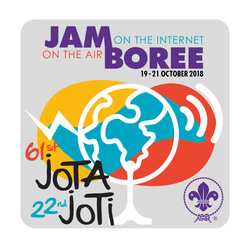 "The sign-up system this year is much simpler," Wilson told ARRL. "There is no need to first register an account at
"The sign-up system this year is much simpler," Wilson told ARRL. "There is no need to first register an account at 
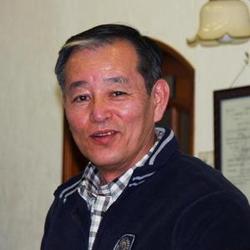 A radio amateur in Japan has Completed WAS on 6 meters. Tac Hirama, JA7QVI, has fulfilled all requirements for the Worked All States (
A radio amateur in Japan has Completed WAS on 6 meters. Tac Hirama, JA7QVI, has fulfilled all requirements for the Worked All States (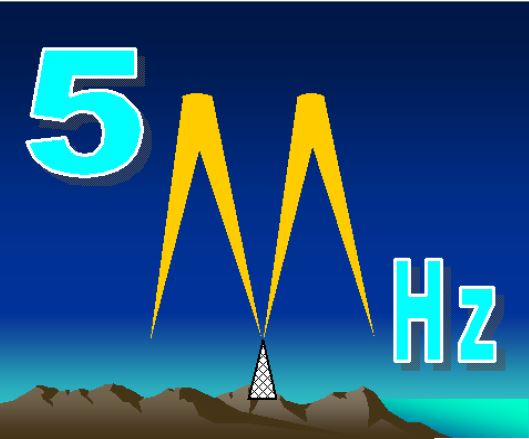 Hungary has regained access to 60 meters. The Hungarian National Media and Infocommunications Authority (NMHH) has
Hungary has regained access to 60 meters. The Hungarian National Media and Infocommunications Authority (NMHH) has 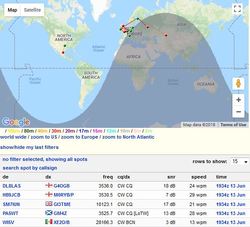 A new Reverse Beacon Network (
A new Reverse Beacon Network (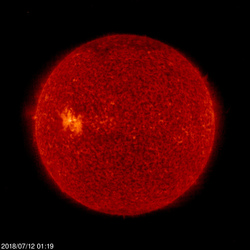 Despite the lack of sunspots last week, solar flux rose from an average of 68.2 in the previous week to 71.5 in the July 5-11 period. Average daily planetary A index increased from 4 to 7.3, while average daily mid-latitude A index increased from 4 to 7.9.
Despite the lack of sunspots last week, solar flux rose from an average of 68.2 in the previous week to 71.5 in the July 5-11 period. Average daily planetary A index increased from 4 to 7.3, while average daily mid-latitude A index increased from 4 to 7.9.







